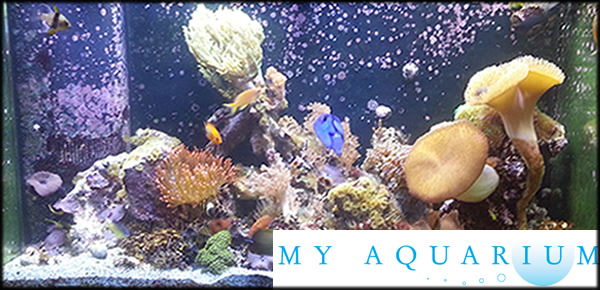Triggerfish (Balistidae)
Triggerfish Family Characteristics:
Members of the Triggerfish family have acquired their common name from the characteristic locking and unlocking mechanism of the first dorsal fin. This fin is normally carried flat in a groove, but it can be locked into position by a third ray, thus preventing the fish from being eaten or withdrawn from a crevice in which it has taken refuge.
Triggerfish are relatively poor swimmers. They achieve propulsion by undulating wave motions of the dorsal anal fins, the caudal fin being saved for emergency accelerations when required. The pelvic fins are absent in most species, or are restricted to a single spine or knob like protuberances.
Body coloration can range from the dull to the psychedelic. The patterning around the mouth is typically exaggerated, probably to deter rivals or predators. The teeth are very strong and often protrusive - ideal for eating shelled invertebrates and sea urchins. You should not keep triggerfish with invertebrates in the home aquarium. Also take care that they do not nip your fingers!
Reproduction takes place in pits dug in the sand within the territory of one of the female fish. These territories, in turn, are all enclosed within the dominant male's greater territory. The eggs are released either in an ascending swimming action or over a preselected site.
In the sea, triggerfish live alone and are intolerant of similar species in the aquarium. They may adopt peculiar resting positions, headstanding or even lying on their sides.
Diet And Feeding:
. Triggerfish are greedy feeders, accepting anything that is offered. Natural foods taken by the bottom feeding species of the family include echinoderms such as starfishes and sea urchins, which they will devour complete with the spines. Triggerfish consume the Crown-of-Thorns Starfish in a specific manor - they first blow the starfish over so that its spines are out of the way and then eat the soft unprotected underbelly. Species that occupy the middle and upper waters of the tank take plankton and green foods. Suitable aquarium foods include frozen foods, chopped earthworms and live river shrimp.
Aquarium Behavior:
The behavior of triggerfish in the aquarium varies from peaceful to unaccommodatingly aggressive, depending on the species. Triggerfish rest in crevices or caves at night, and so it is advisable to aquascape the aquarium to allow for this. Do not be surprised, however, if the fish take advantage of your thoughtfully provided refuges when you try to net them! In nature, they favor underwater cliff faces; this is especially so in the Caribbean species.
List Of Popular Aquarium Triggerfish:
- Undulate Triggerfish, Red Lined Triggerfish (Balistapus undulatus)
- White Lined Triggerfish, Bursa Trigger (Balistes bursa)
- Queen Triggerfish (Balistes vetula)
- Clown Trigger (Balistoides conspicillum)
- Black Finned Triggerfish (Melichthys ringens)
- Black Triggerfish, Niger Triggerfish (Odonus niger)
- Picasso Trigger (Rhinecanthus aculeatus)
- Bursa Triggerfish (Rhinecanthus verrucosus)
- Humu Rectangle Triggerfish (Rhinecanthus rectangulus)
- Pinktail Triggerfish (Melichthys vidua)
- Crosshatch Triggerfish (Xanthichthys mento)


